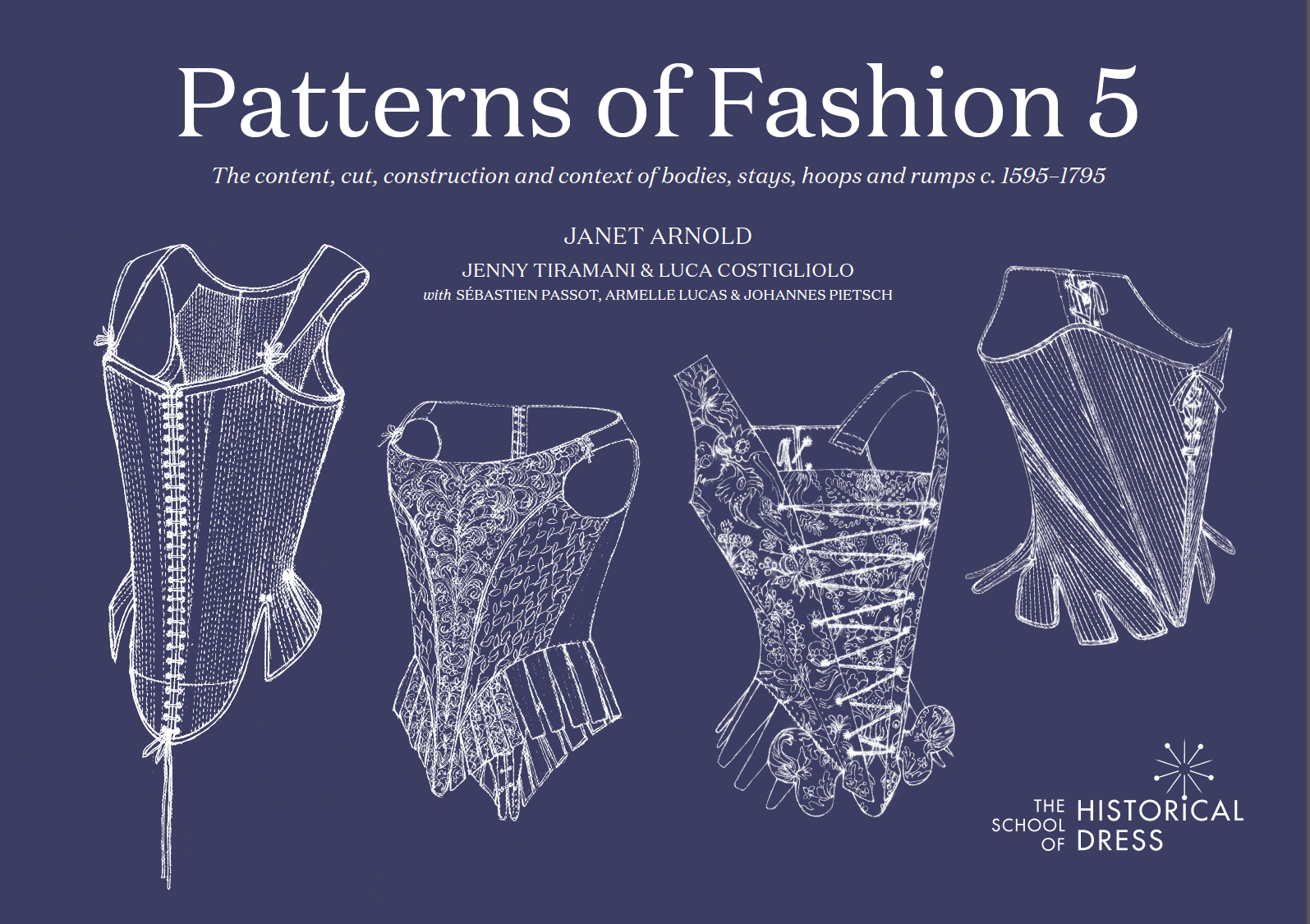On the fifth day of Christmas: a review of the newest Patterns of Fashion book, which I received as a present this year. It's currently available for sale from the School of Historical Dress (this is the first printing, and future print runs are not guaranteed).
Patterns of Fashion 5: The content, cut, construction and context of bodies, stays, hoops and rumps c.1595-1795 is the latest, posthumous, book from Jane Arnold's extensive research into Western costume (additional content by Jenny Tiramani and Luca Costigliolo, et al). Having already covered gowns, gowns and more gowns/doublets, as well as linens, we now get women's foundation garments--all the stays and skirt supporters that make the fashionable silhouette of the 17th and 18th centuries.
First off, this is a huge book--at 160 pages, it's the same size as volumes 1 and 2 combined. Like volume 4, volume 5 has color photographs of the historic garments. Here, however, they are placed right next to the patterns instead of making a separate gallery at the beginning. In several cases, the color photographs have replaced the line-drawings of the complete garment; all told, I prefer the cases where both are present. The photographs show color and texture, while the line-drawings show cut and construction (though, admittedly, the pattern pieces do this too). The use of color has also been extended to the patterns themselves, where it it used to differentiate layers and boning, etc.
The book is divided into two main parts: stays, and skirt supports. Twenty-seven sets of stays or boned bodices (and two busks), dated from c.1598 to the 1790s are featured, as well as twelve farthingales/hoops/rumps from c.1550 to 1800. Before the patterns, there's a 25-page introductory section: lavishly illustrated with both modern photographs of surviving garments and historic images, it explores the materials used in stays and hoops; historic cutting diagrams; and contemporary illustrations of the garments.
As a fun bonus, some of the 17th and 18th century stays have accompanying stomachers; two court ensembles (1660s and 1760s) are patterned along with their petticoats, trains, and stomachers. I was also intrigued by the inclusion of a set of maternity stays (c.1665-1675), and of riding stays (1780s). For those making garments, there's a page discussing how to take measurements for 17th/18th century stays, and another three explaining how to draft custom patterns based on the historic ones (with pictures). I'm also enjoying the English-French-German-Spanish-Italian-[Swedish/Dutch] glossary of fabric and garment terms.
I'm honestly a little overwhelmed by the size and scope of this book. My main impression is that it's 1) beautiful, 2) detailed, and 3) full of useful information. Definitely useful for making 17th and 18th century undergarments, and vital for those interested in English court dress of that time frame.
Stars: 5
Accuracy: High. All original garments, lots of contemporary portraiture included.
Difficulty: Advanced for making garments (there is some drafting advice included to help). All levels for appreciating garment construction.
Overall Impression: Possibly the best one yet. The research remains impeccable; the pairing of photographs with the pattern diagrams makes it even easier to use than volumes 3-4, since there's less need to flip back and forth.

Its beautiful. I received my copy just after Christmas. I love love it.
ReplyDeleteI'm very excited by the rumors of a 6th book. :)
ReplyDelete